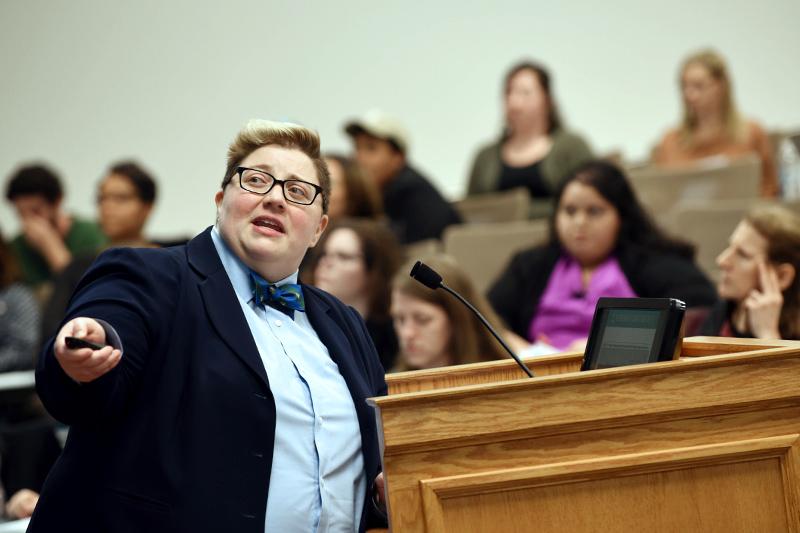At universities, women faculty still earn less than men
April 10, 2018, marks Equal Pay Day — the day that shows how far into a calendar year the average woman must work to achieve the same pay earned by a man in the previous year. How do women in higher education stack up?
Heather Johnson, a research assistant professor at Newcomb College Institute, authored Pipelines, Pathways, and Institutional Leadership for the American Council on Education’s Center for Policy Research and Strategy. The report showed that in comparing average salaries for full-time instructional faculty, men out-earn women by $13,874 at public institutions and by $18,201 at private institutions.
The findings in Johnson’s report support previous studies about women working in higher education. For instance, women have earned half or more of all doctoral degrees since 2006. Yet women hold less than a third of full-professor positions at U.S. degree-granting, postsecondary institutions. And women of color achieve an even lower percentage, as compared to men of color. Women who work in higher education are promoted less frequently and earn less than men, despite outnumbering men in the same field.
“What we are finding is that it’s hard to break the 30 percent barrier for women in leadership positions.”
Heather Johnson
Johnson said academic institutions need to challenge their assumptions, such as whether enough qualified women are available.
“Historically, many people found the pipeline argument convincing and it would almost shut down the conversation because it was perceived that there were not enough qualified women candidates” for leadership positions, Johnson said. “That’s not been the case and it certainly isn’t the case right now.
“What we are finding is that it’s hard to break the 30 percent barrier for women in leadership positions. For whatever reason, we’ve plateaued there, and there is some indication of backsliding.”
This barrier, Johnson noted, exists in other fields and can include women on governing boards and as corporate CEOs.
Johnson cited a need for more data, overall and from universities, which can lead to solutions to promote women to tenure track academic and leadership positions to decrease the pay gap in higher education.
“We need to be mindful of who’s in the candidate pool. Do we have a diverse set of candidates, and if not, why not?” Johnson said.
Universities should not assume they’ll catch up eventually.
“We have qualified candidates for those positions now,” she added.


